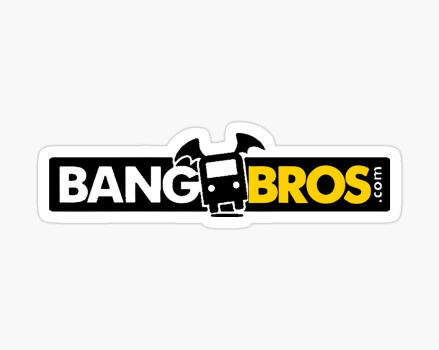It is human nature to constantly compare ourselves and our belongings to those around us. However, when it comes to shopping, this tendency can actually work in our favor.
By utilizing the power of comparison, we are able to unlock analyzed discounts that may otherwise go unnoticed. Whether it’s comparing prices at different stores or using online tools to find the best deals, harnessing the ability to make well-informed comparisons can lead to significant savings.

Evil Angel
 Multiple weekly video updates
Multiple weekly video updates Over 18,000+ hardcore videos
Over 18,000+ hardcore videos Unlimited access to 80+ channels
Unlimited access to 80+ channels Award-winning series with top pornstars
Award-winning series with top pornstars
Adult Time
 New releases every day
New releases every day 60,000+ episodes & 400+ channels
60,000+ episodes & 400+ channels Supports VR & interactive sex toys
Supports VR & interactive sex toys Watch on mobile, desktop or FireTV
Watch on mobile, desktop or FireTV
LetsDoeIt
 4K Exclusive Porn
4K Exclusive Porn 1000+ Scenes
1000+ Scenes Unlimited Steaming & Downloading
Unlimited Steaming & Downloading New Models You Wouldn't Have Seen
New Models You Wouldn't Have Seen Free Trial (Steaming Only)
Free Trial (Steaming Only)
Brazzers
 4K Exclusive Porn
4K Exclusive Porn 10000+ Scenes
10000+ Scenes Unlimited Steaming & Downloading
Unlimited Steaming & Downloading Over 2500 Pornstars
Over 2500 Pornstars Discounted Membership
Discounted Membership
Naughty America
 Unlimited downloading & streaming
Unlimited downloading & streaming Over 10,000+ porn scenes
Over 10,000+ porn scenes HD, 4K & VR porn content
HD, 4K & VR porn content Supports all devices including VR headsets
Supports all devices including VR headsets
MamaCitaz
 4K Exclusive Latina Porn
4K Exclusive Latina Porn 800+ Scenes
800+ Scenes Unlimited Steaming & Downloading
Unlimited Steaming & Downloading Exclusive Latina Models
Exclusive Latina Models Free Trial For Two Days
Free Trial For Two DaysThe Psychology Behind Discounts
Before we jump into how comparisons can unlock analyzed discounts, let’s first understand the psychology behind why people love discounts in the first place.
The Thrill of Bargain Hunting
There is no denying that scoring a good deal gives us a sense of satisfaction and accomplishment. It triggers our primal instinct of hunting for resources at a lower cost. As human beings, we are wired to seek out opportunities where we can save money or get more value for less.
Example: Imagine you see two similar jackets on sale – one is priced at $100 while the other is discounted at 50% off, making it only $50. Which one would you be more inclined to buy? Most people would opt for the latter since they feel like they have scored a better deal by getting a higher-priced item for half its original price.
Fear of Missing Out (FOMO)
Another reason why people are drawn towards discounts is the fear of missing out (FOMO). Limited-time offers or flash deals create a sense of urgency among consumers as they do not want to miss out on a great deal. This fear drives them to make impulsive purchases, even if they do not necessarily need the item.
Example: Have you ever found yourself buying something just because it was on sale and you didn’t want to miss out? This is a common scenario during major sales events like Black Friday or Cyber Monday. People tend to buy things they don’t need simply because of the discounted price and FOMO.
The Perception of Value
As consumers, we are always looking for ways to get more value for our money. Discounts give us the perception that we are getting a good deal, even if the actual savings may not be significant. A $10 discount on a $100 item may seem small, but it still makes people feel like they are saving money.
Example: Let’s say you’re planning to buy a new laptop and you come across two options – one priced at $1000 with no discounts and another priced at $1100 with a 10% discount. Even though both laptops cost the same amount after the discount, most people would choose the second option as they perceive it to be a better deal due to the discount.
The Power of Comparison in Unlocking Analyzed Discounts
Now that we have understood why people love discounts let’s explore how comparisons can unlock analyzed discounts.
Cross-Category Comparisons
One way companies lure customers into making purchases is by offering cross-category comparisons. This means comparing products from different categories and showing how much more expensive they are compared to their own product.
Example: A skincare company might compare their anti-aging serum with high-end luxury brands’ similar products. By showcasing their lower prices and highlighting similar benefits, they create the perception that their product is of equal quality but at a fraction of the cost.
This strategy works well because it appeals to consumers who want premium-quality products at a lower price. It also creates a sense of trust in the brand as they are transparent about their prices and not hiding behind inflated numbers.
Competitor Comparisons
Another way companies use comparisons to unlock analyzed discounts is by comparing themselves with their competitors. This allows them to position their product or service as better value for money, thus attracting more customers.
Example: An online streaming platform might offer a comparison chart showcasing how much cheaper their monthly subscription is compared to other similar services like cable TV or other streaming platforms. By doing this, they highlight the savings customers can make by choosing their service over others.
This type of comparison also helps businesses differentiate themselves from their competitors and stand out in a crowded market. Customers are likely to choose the one that offers more value for less, making competitor comparisons an effective tool in unlocking analyzed discounts.
The Dangers of Blindly Falling for Discounts
While discounts may seem like a great deal on the surface, there are some dangers associated with blindly falling for them without proper analysis and comparison.
Bait-and-Switch Tactics
Some businesses employ bait-and-switch tactics where they advertise a high-discounted item but end up selling something else entirely. This can be misleading and unethical as consumers believe they are getting a good deal when, in reality, it’s just a ploy to get them through the door. If you’re a fan of virtual reality porn, Best VR Porn Deals are a must-have resource for finding the hottest and most affordable deals on high-quality VR adult videos.
Example: A clothing store advertises a sale on designer handbags at 80% off. Once customers enter the store, they find out that only outdated styles are discounted, while newer collections are still full-priced. This tactic preys on people’s desire to save money and can leave them feeling cheated once they realize what has happened.
Sunk Cost Fallacy
Another danger of blindly falling for discounts is the sunk cost fallacy. This is the tendency to continue investing in something because you have already spent money on it, even if it’s not worth it. Though there are many reviews highlighting the benefits and features of POVR, nothing beats a first-person perspective review to truly understand how this tracking tool can improve your fleet management.
Example: You buy a gym membership at a discounted rate for the entire year. However, after a few months, you realize that you don’t enjoy going to the gym and are not seeing any results. Despite this, you continue going because you feel like you have invested money in it and don’t want it to go to waste.
This type of thinking can lead people to make irrational decisions based on their previous investment rather than considering the actual value they are getting from the discount.
The Importance of Analyzing Discounts Before Making a Purchase
After understanding both the positive and negative aspects of discounts, it is crucial to analyze them before making any purchases. Here are some key reasons why analyzing discounts is essential:
To Avoid Overspending
Analyzing discounts helps you avoid overspending by determining whether or not the discounted price is actually worth it. It allows you to make informed decisions instead of falling prey to impulse buying or FOMO.
Example: You see an advertisement for a 50% off sale at your favorite clothing store. Upon closer inspection, you realize that most items are only marked up by 30%, making the discount less attractive. By analyzing this discount, you can save yourself from overspending on items that aren’t truly discounted.
To Get the Best Value for Your Money
Comparing prices and products allows you to get the best value for your money. Instead of blindly settling for a discount, analyzing it gives you options and enables you to choose what suits your needs better.
Example: A new phone model has just been released with a hefty price tag attached to it. However, upon comparison with last year’s model, which now comes with a discount, you realize that the older model still has similar features and is a better value for your money.
To Support Ethical Businesses
Analyzing discounts helps you support ethical businesses. By researching and comparing prices and products, you can choose to buy from companies that use fair marketing tactics instead of engaging in bait-and-switch or other unethical practices.
Example: You are in the market for a new mattress and come across two different brands. One offers an attractive 50% off while the other has transparent pricing with no major discounts. Upon further research, you find out that the first brand uses deceptive advertising techniques, whereas the second one is known for its transparency and honesty. In such a scenario, choosing the latter supports ethical business practices.
In Conclusion
Discounts have a powerful impact on consumers’ purchasing decisions. However, it is essential to analyze them before blindly falling for any offer. The power of comparison allows us to unlock analyzed discounts by giving us insight into the true value of a discount and making informed decisions based on our needs and preferences.
So, the next time you see a tempting discount advertised, take a step back and compare it with other options available in the market. You might be surprised at how much more value you can get if you just take the time to analyze and compare before making a purchase.
What Factors are Taken Into Account When Analyzing a Discount?
Discounts are commonly used in marketing strategies to attract customers by offering reduced prices. When analyzing a discount, several factors are taken into account. The original price of the product or service is considered to determine the percentage or amount of reduction. The duration of the discount and its availability for all customers or specific groups are evaluated. Market trends and competition may also be considered when determining the effectiveness and impact of a discount on sales.
How Does the Analyzed Discount Differ From a Regular Discount?
An analyzed discount is one that has been carefully evaluated and calculated based on various factors such as customer demographics, purchase history, and competition. This differs from a regular discount, which is typically a fixed percentage or amount off the original price without any specific considerations. The analyzed discount takes into account individualized data to offer targeted discounts that may be more impactful and beneficial for both the customer and the business. It also allows for more precise tracking and measurement of its effectiveness in driving sales.
Can You Provide an Example of How an Analyzed Discount is Calculated?
An analyzed discount is calculated by taking the total amount of the discount and dividing it by the original price, then multiplying that number by 100 to get the percentage. If an item originally costs $100 and has a discount of $20, the calculation would be ($20 / $100) x 100 = 20% off. This shows that the customer saves 20% on their purchase with the analyzed discount.



